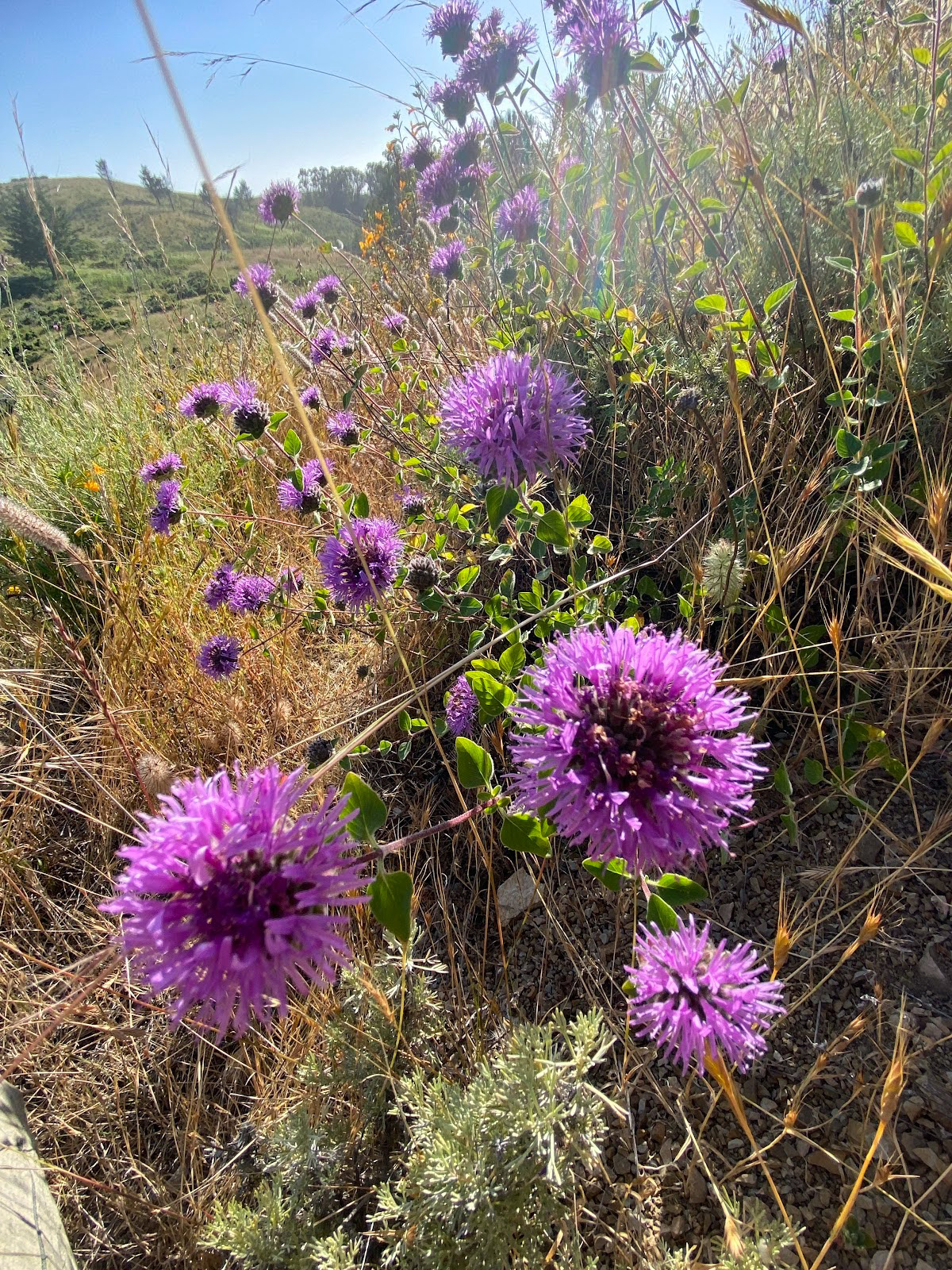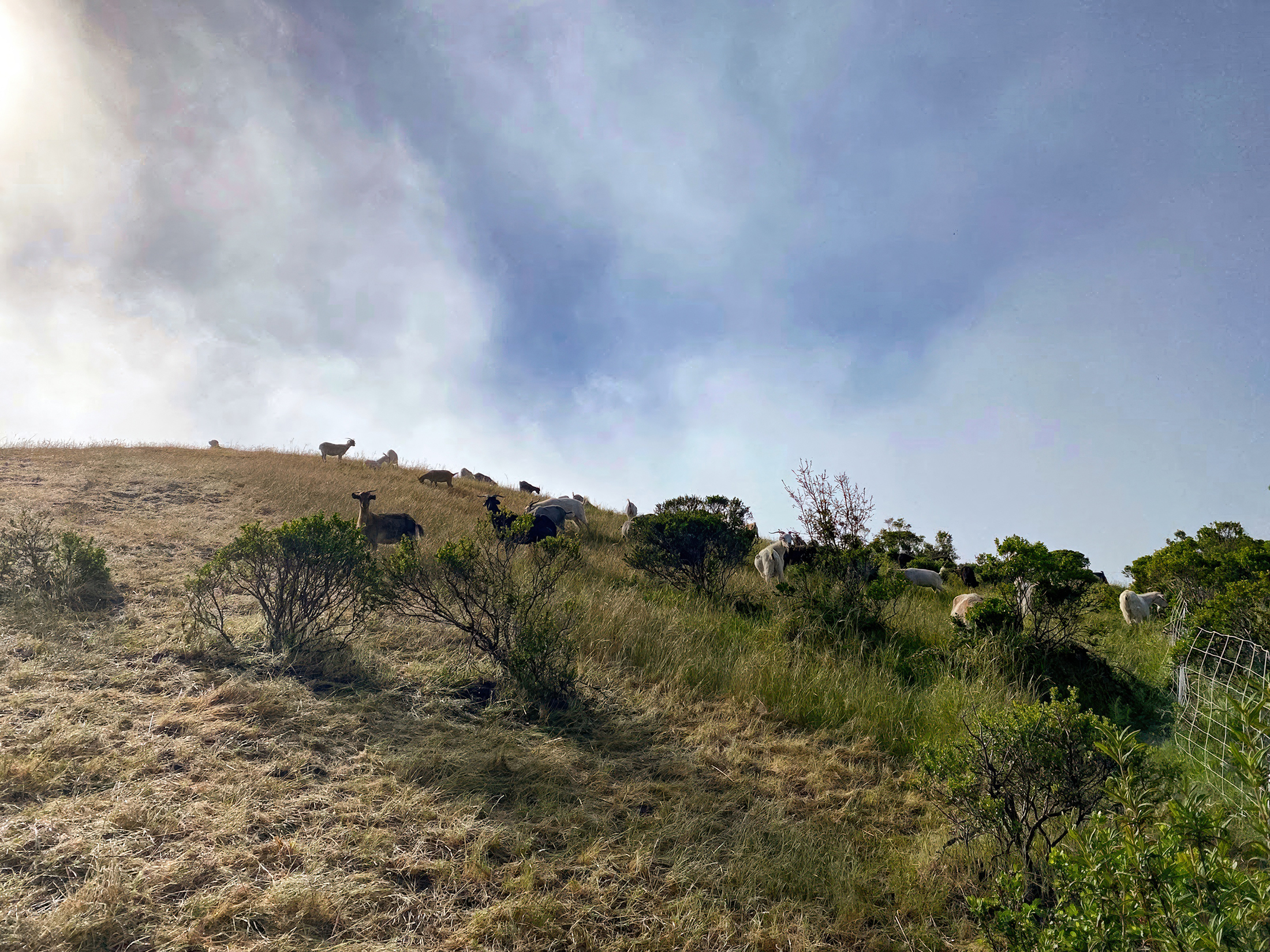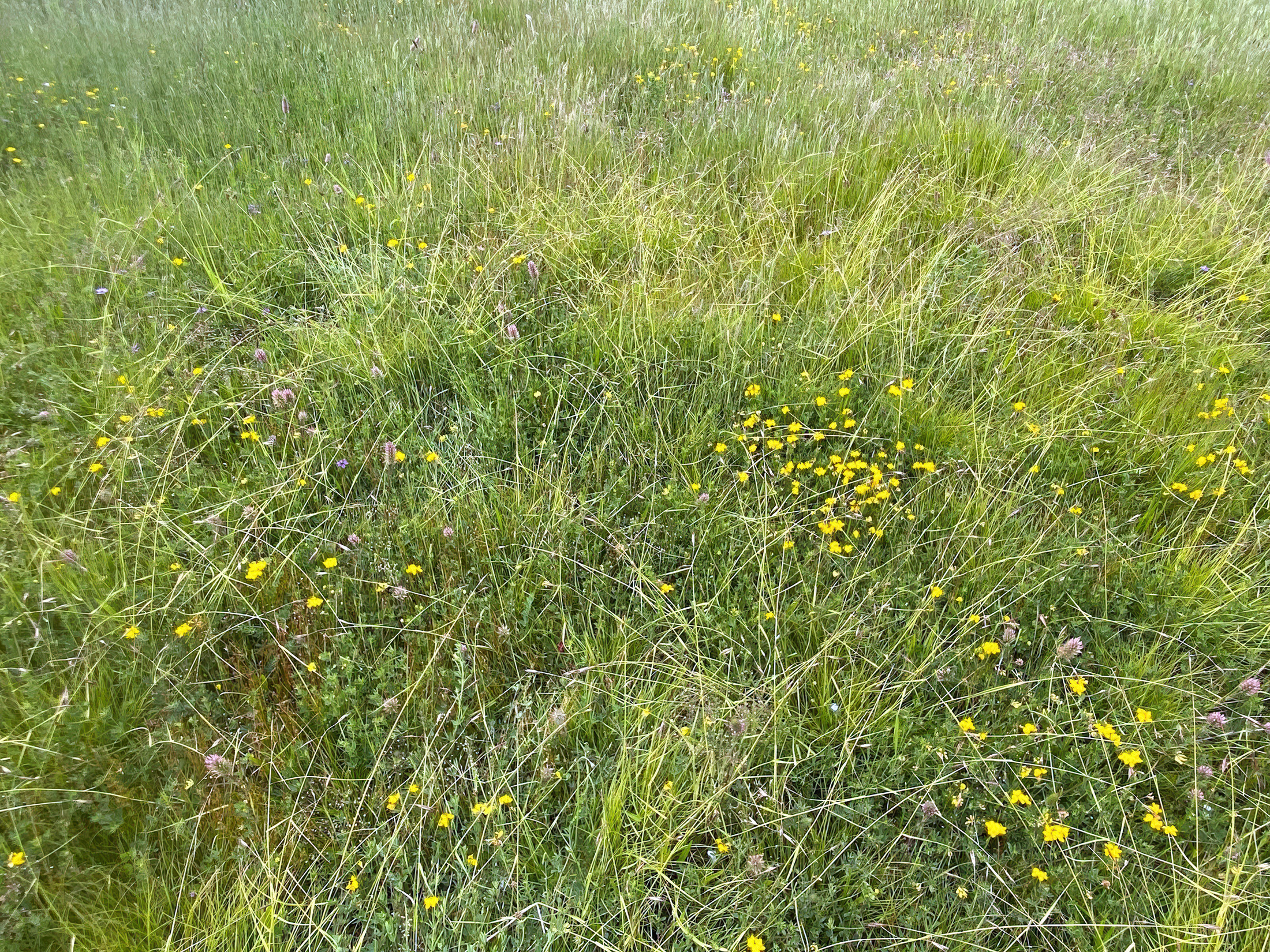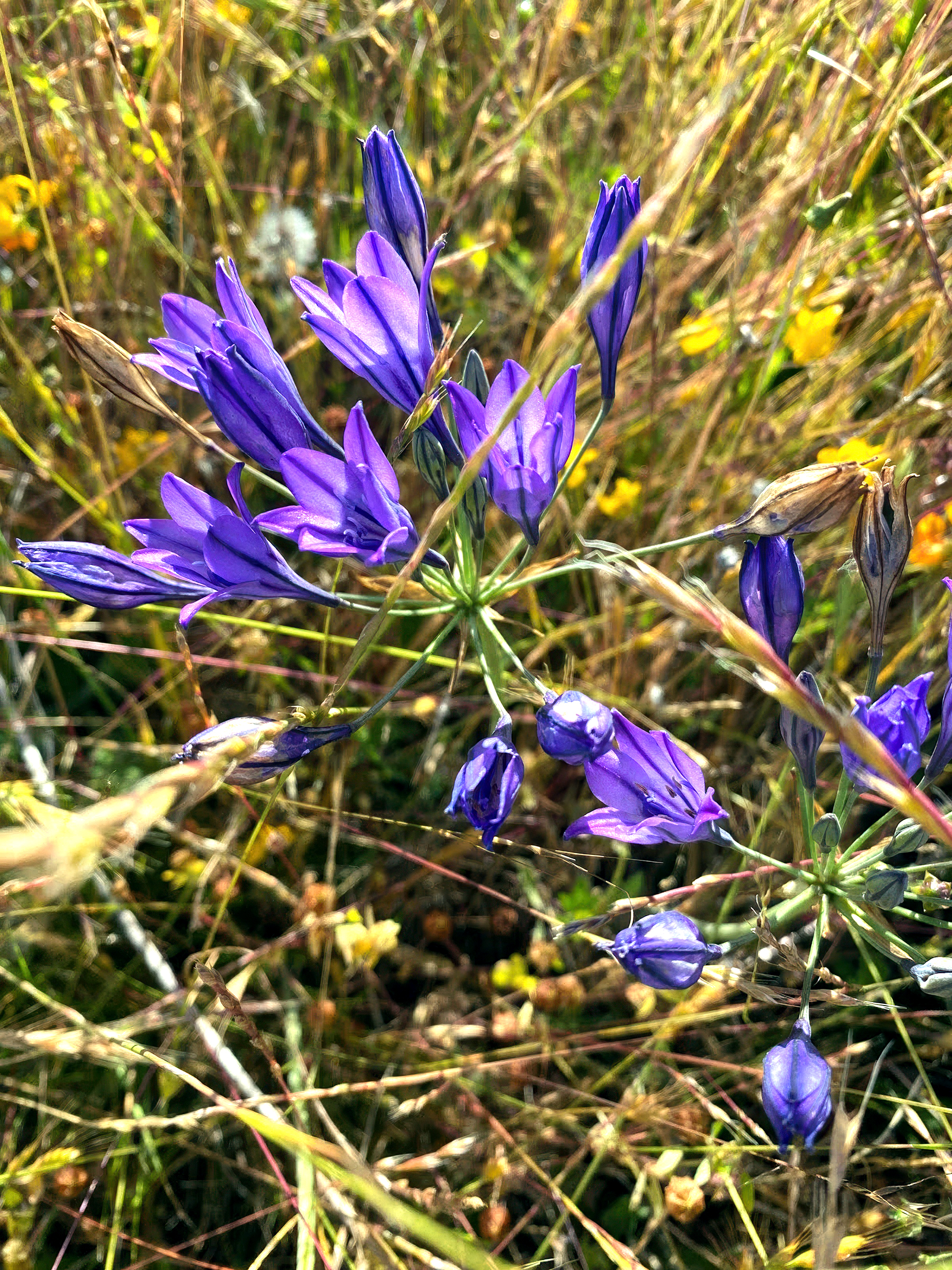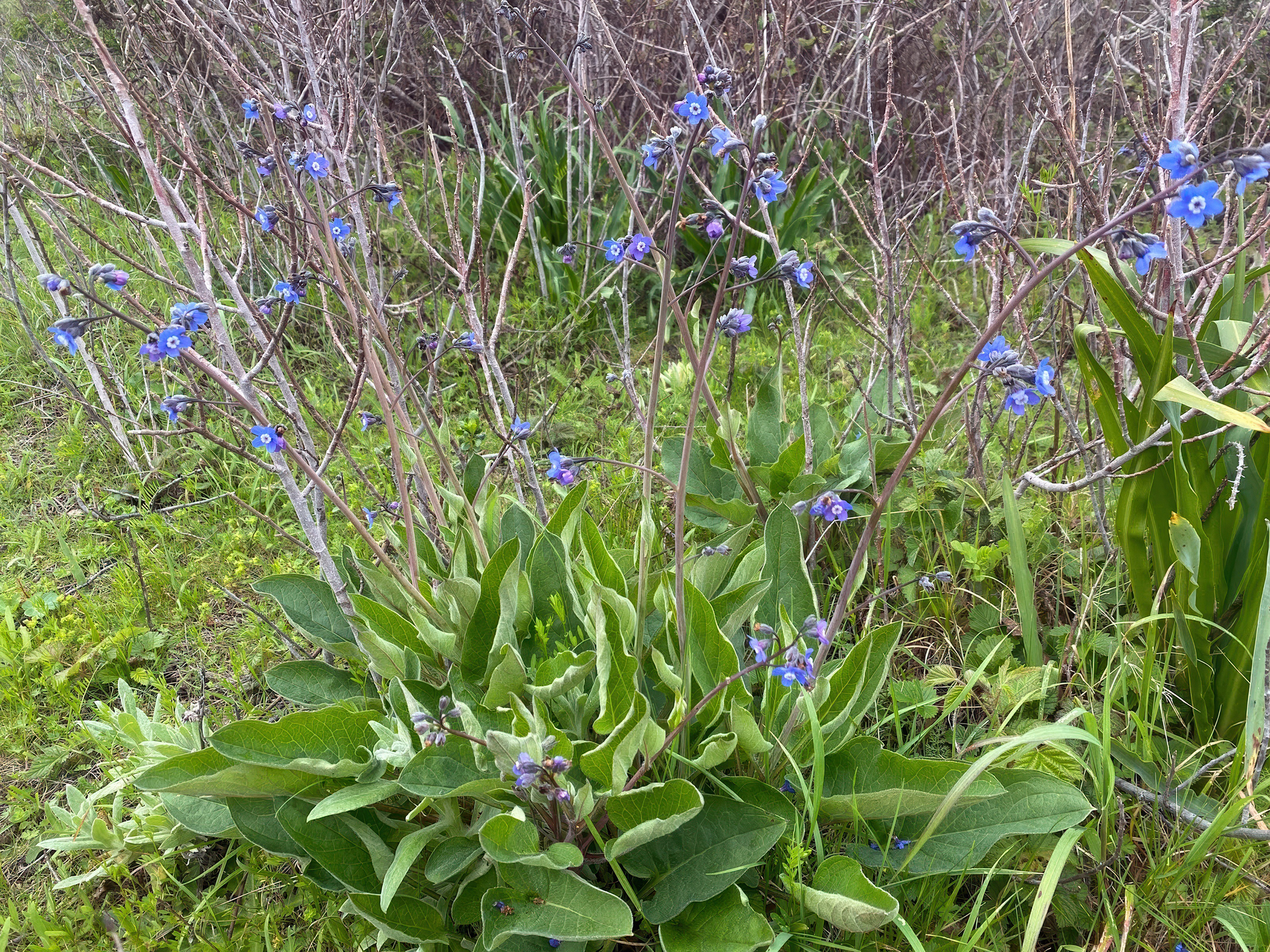Coastal California is home to an array of unique native flora and fauna: shrubs, grasses, sedges, trees, flowers and vine, many of which are found only in this particular region.
Grazing for Biodiversity
Fence line photos feature pasture composition post- (left) and pre- (right) grazing. Referring to species composition in the pre-graze pasture on the right, goats have grazed and browsed much of the coyote brush as well as around the bases, opening up space and light in the area surrounding shrubs. Goats have grazed Mediterranean lineseed forbs and plantain, both prolific and easily established plants.
09/23/2024
By: Kim Kitchener
Photos by Kim Kitchener
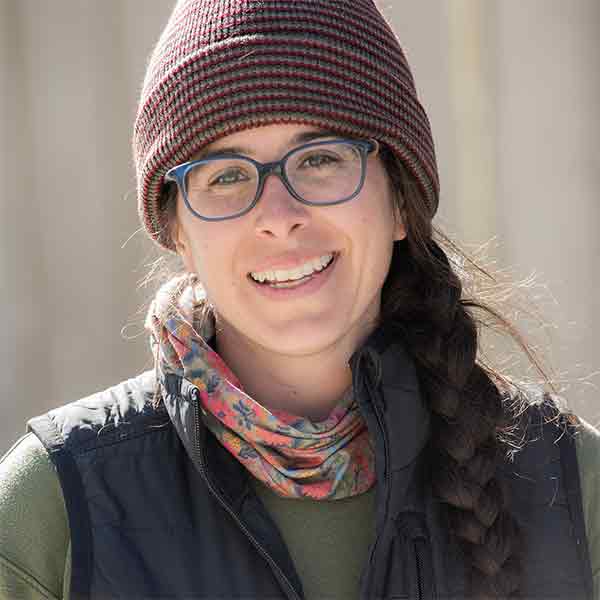 Coastal California is home to an array of unique native flora and fauna: shrubs, grasses, sedges, trees, flowers and vine, many of which are found only in this particular region. Our Mediterranean climate allows many things to thrive all year round. In addition to all the awesome native plant species, introduced plants have taken up residence in prime growing conditions, oftentimes dominating landscapes and making it hard for other plants to find room of their own. This can lead to an overabundance of a few, most likely, happily thriving plants, but a lack of diversity.
Coastal California is home to an array of unique native flora and fauna: shrubs, grasses, sedges, trees, flowers and vine, many of which are found only in this particular region. Our Mediterranean climate allows many things to thrive all year round. In addition to all the awesome native plant species, introduced plants have taken up residence in prime growing conditions, oftentimes dominating landscapes and making it hard for other plants to find room of their own. This can lead to an overabundance of a few, most likely, happily thriving plants, but a lack of diversity.
Abundant stand of blooming lupine. Omitted during spring goat grazing as it can cause issues in pregnant does. By grazing grasses and forbs surrounding the growing lupine, plants were able to spread and establish with more space and minimal competition to light and moisture.
First image shows lupine stand in early spring; second shows midsummer growth.
Landscapes support all kinds of life and are consistently active. The greater the variety of plants attracting all sorts of different insects and creatures, the more life is supported and maintained. More life allows more nutrients to be cycled, feeding soil microbes and the ecosystem continues to buzz. By contrast, in areas where only a few species of plant dominate there can be less abundance of life, less inputs, and conditions may be created where less life can thrive.
Coastal prairie hillside featuring coyote mint, California sagebrush and sticky monkey flower in the distance growing abundantly in early spring post winter goat and cattle graze. Noted area of high impact.
Grazing is a tool we can use to help create conditions to support increased biodiversity. As our goats move across the ranch, they’re grazing grasses and flowers, munching on thistles, browsing the leaves off of shrubs and trees. The herd grazes a lot of first succession plants that readily pop-up across pastures; think weeds i.e. plantains, thistles, bristly oxtongue, docks, brambles. Thanks to our goats grazing these plants, there is now more room for the seeds of other plants to find the sun and space they may have never found without the help of our herd.
California oatgrass seeding out after a period of recovery post-winter goat graze. Stand became more significant after our herd grazed the coyote brush that was shading out potential plants.
During the wetter, wintry months the goats are filling up on coyote brush and other shrubs in earnest. They also clear the fine fuels growing around the bases of plants. All of this grazing clears the way for more plants to grow, and keeps certain vigorous shrubs like coyote brush from expanding uninhibited throughout the range land. The defoliation or removal of leaves from shrubs by goats allows more sunlight to reach the ground and creates opportunities for new plant recruitment.
California native flower Triteleia laxa (Brodiaea laxa) that spreads rhizomatically under disturbance and found in larger clusters post winter goat grazing.
Many flowers and forbs found across the Pescadero region have evolved with grazing animals and as such appreciate a good amount of ground disturbance and spread via rhizomes. Douglas iris (Iris douglasiana) and California soap root (Chloroglaum pomeridianum) are both rhizomatous spreading plants whose populations can be positively impacted by the disturbance caused under the herd’s hooves and mouths.
California native pacific houndstongue coming up strong in winter grazed shrub understory.
As graziers and goat herders, we rely on knowledge of the ecosystem, what’s growing where and when, along with our observations of how the herd will impact a particular species or community of species so that we can move our herd across the landscape in a positive fashion. This practice means a lot of carefully considered trial and error as well as changing the pattern of grazing whether that be adjustments in stocking density or seasonal timing to suit environmentally variant areas of the ranch. Managing such a complex dance, some things remain certain while others provide surprise and serendipity.
Herd moving onto new pasture. Careful consideration is paid in order to determine when to optimally move the goat herd to new forage. Above photo shows the previous day’s work: even plant grazing with significant ground cover remaining.



